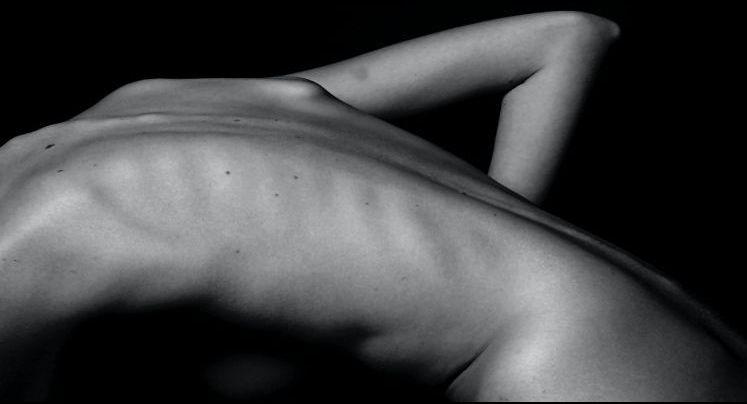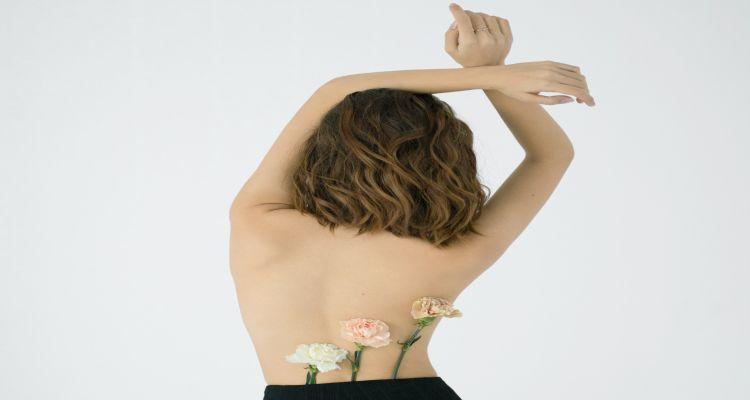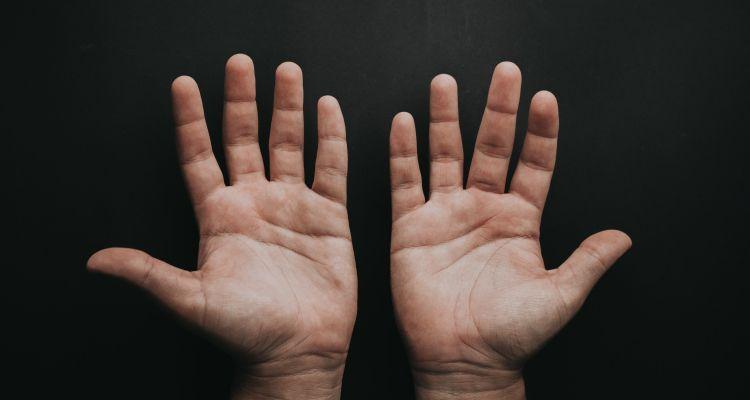
Rose lichen - symptoms, causes and treatment
Updated on 02. November 2023
Rose lichen is a skin disease that is also called "pityriasis rosea". The disease is often manifested by small, scaly, round patches on the skin. However, the disease is usually uncomplicated with mild symptoms.
Rose lichen Brief overview:
- Causes: Not exactly known
- Symptoms: Tiredness, headache, joint pain, itching
- Prevention: Not known
- Treatment: Cream, medicines
What are the symptoms of rose lichen?
Rose lichen goes through different stages. As a result, the symptoms change during the course of the disease. Even a few days before the first signs appear on the skin, affected people may feel weak and tired. Headaches or joint pain are also common.
What does a floret lichen look like?
In the initial stage, floretscence is characterised by a round to elongated spot on the chest, abdomen or back. This so-called primary spot is pink to brownish, sharply defined and scaly. The redness can be between three and ten millimetres in size. The spot is raised and the scaling at the edges is directed inwards. This makes the spots remotely reminiscent of a rose blossom. Within one to two weeks, many small, scaly foci form around the primary spot. The small rednesses are located on the upper part of the body and are no more than ten militants in size. Rose lichen rarely appears on the face or on the forearms and lower legs.
What other complaints does rose lichen cause?
In addition to the appearance of the skin, fatigue, headaches and loss of appetite may also occur in individual cases. In contrast to many other skin diseases, the itching of erysipelas varies in severity. Many patients only notice a slight itch. If the affected person tends to have [dry skin](), severe itching becomes apparent. Additionally, burning and pain may occur.
Which people belong to the risk group for erysipelas?
The disease can affect people of any age. However, it mostly occurs in people between ten and 35 years of age. It is mainly girls and women who suffer from rosacea.
Do I have rose lichen or ringworm?
Rose lichen and ringworm are skin diseases characterised by reddened, round to oval skin areas. However, there are clear differences between the two diseases, which makes it possible to distinguish between them.
- Cause: While erysipelas is caused by viruses, ringworm is caused by a fungal infection.
- Symptoms: Ragweed appears with scaling and a blurred transition. Ringworm is indicated by a distinct red ring around the inflamed area.
- Body areas: Both skin diseases affect the trunk. Ringworm can also form on the upper arms and thighs. Ringworm can also occur on the face, neck, and limbs.
What is the cause of rose lichen?
The exact cause of erysipelas is not known for sure. New studies assume an infection with human herpes viruses of type 6 and 7. These pathogens are latent in the bodies of 80 % of adults. The viruses do not cause acute diseases or symptoms. However, they can flare up due to certain triggers and cause a disease such as erysipelas.
What triggers can cause rose lichen?
Although many people carry the herpes viruses, only a few fall ill. So far, the disease has not been sufficiently investigated to have precise information about all triggering factors.
- Stress: In tense phases of life, the immune system is weakened. That is why the [skin rash of]() erysipelas can be favoured by stress.
- Genetic predisposition: Pityriasis rosea often occurs within a family.
- Existing skin diseases: People with skin diseases such as psoriasis or [atopic dermatitis]() have an increased risk of developing rosacea.
- Vaccinations: In rare cases, vaccinations against yellow fever, influenza or corona can trigger rosacea.
- Diseases: A few cases of roseola have been reported following Corona infection.
- Change of seasons: The floretscence occurs mainly in spring and autumn when the temperatures change.
Is rose lichen contagious?
Rose lichen is not considered contagious. The causative viruses are transmitted by droplet or saliva infection. The infection does not mean that the affected person will contract erysipelas in their lifetime.
What is the treatment for rose lichen?
Most of those affected are bothered by rose lichen more from a cosmetic point of view. Since the disease mostly heals by itself within two months, a specific treatment is not necessary. In the case of extensive complaints such as severe itching, the healing can be supported with medication.
How can the healing of rose lichen be supported?
The healing process of the skin can be supported with simple means. With the right behaviour, major complaints can also be avoided.
- \- Light therapy: UV light can reduce skin inflammation and alleviate symptoms.
- \- Hygiene: Long and hot baths or showers should be avoided because they dry out the skin.
- \- Moisturising creams: To prevent the skin from drying out, a skin care cream without a high fat content should be used after every bath or shower.
- \- Sauna: Unnecessary sweating, for example, through sauna visits, delays healing.
- \- Clothing: Tight clothing chafes and irritates the skin. Textiles made of microfibre are not breathable and quickly cause heat build-up in warm weather. It is better to wear more clothes made of natural fibres like cotton, wool or linen.
- \- Lifestyle changes: Reducing stress, eating a healthy diet and getting enough sleep can improve the course of rosacea.
What medicines help against rose lichen?
If the symptoms are more severe, such as itching and burning, medicinal creams or drugs can alleviate the discomfort. These include:
- Cortisone ointment for rubbing in has an anti-inflammatory effect.
- Polidocanol has a mild anaesthetic effect and relieves itching.
- For more severe symptoms, antihistamines in tablet form can help against itching.
How long does it take to heal from rose lichen?
The erysipelas usually heals within eight to ten weeks. This is independent of whether medication is used or not. In severe cases of pityriasis rosea, healing can take several months. If the course is normal and there is no itching, there are no scars. In order for the skin to heal well, there must be no heat accumulation on the skin.
Do I need to see a doctor if I have rosacea?
Pityriasis rosea is a harmless but long-lasting disease. If the findings are confirmed and there are no other physical symptoms, a visit to the doctor is not absolutely necessary. A dermatologist can determine whether it is ringworm or rosacea. If you develop ringworm during pregnancy, it is important to consult a gynaecologist. Infection in the first weeks of pregnancy can lead to complications such as premature birth.
What home remedies help with rose lichen?
The medical treatment of erysipelas can be supported by home remedies. These help to reduce the symptoms, especially in severe cases.
- Cold: compresses with cold water can relieve itching and pain.
- Baths: Sea salt or camomile are excellent skin-soothing bath additives. The water should not be too hot, however, as this can aggravate the symptoms.
- [Witch hazel](): Witch hazel has a cooling and soothing effect on the skin. Cold compresses with witch hazel water are best used for this purpose. The witch hazel products used should not contain alcohol, as this also dries out the skin.
- Plant oils: Oils such as evening primrose oil, jojoba oil or coconut oil can be applied to the affected skin condition. The skin must still be moist for this, as pure oils dry out the skin.
How is erysipelas treated in babies and young children?
If babies or small children fall ill with erysipelas, the treatment must be adapted to the small patients. The paediatrician can best advise parents on which medicines are approved for children. The healing can be accelerated by the following points.
- Home remedies also help to support healing in children.
- Care products should not contain too much fat; a fragrance-free moisturiser is better.
- Optimal conditions for the skin should also be ensured for babies and small children. Avoid sweating and wear breathable clothing made of natural materials such as cotton to prevent heat build-up.
- Sunbathing can cause the inflamed areas to darken.

Hameli's vision
Go to Vision
Vaginal Fungus - Symptoms, Causes & Treatment
Go to Vaginal mycosis
Dry skin - What helps against it?
Go to Dry skin
Witch hazel - varieties, cutting, effect, & products
Go to Witch Hazel
Recognise and treat coccygeal fistula
Go to Coccygeal fistula
Anal fistula - symptoms, causes & treatment
Go to Anal fistula
Labial tear - Symptoms, Causes & Treatment
Go to Labial tear
Intertrigo - Cause, symptoms and treatment of the skin wolf
Go to Intertrigo
Anal abscess: symptoms, recognition, causes & treatment
Go to Anal abscess
Chickenpox - symptoms, vaccination, infection and treatment | Hamelis
Go to Chickenpox
Seborrhoeic Eczema - Symptoms, Causes & Treatment
Go to Seborrhoeic eczema
Anal fissure - Symptoms. Causes & home remedies
Go to Anal fissure
Vaginal dryness - symptoms, causes & treatment
Go to Vaginal dryness
Hives - Cause, symptoms and treatment
Go to Hives
Hamelis experts
Go to Experts
Scars - treatment and removal
Go to Scar
Ringworm: Symptoms, Causes & Treatment
Go to Ringworm
Scabies - symptoms, cause and treatment
Go to Scabies
Treat anal eczema sustainably
Go to Anal eczema
Eczema - symptoms, causes and treatment
Go to Eczema
Contact allergy - symptoms and treatment
Go to Contact allergy
Treat stubborn nail fungus
Go to Nail fungus
Crabs - Intimate area, symptoms & treatment
Go to Crabs
Pruritus - Causes, symptoms and treatment
Go to Pruritus
Rosacea on the face - symptoms, causes and treatment
Go to Rosacea
Perioral dermatitis - symptoms, treatment & home remedies
Go to Perioral dermatitis
Skin fungus - cause, symptoms and treatment
Go to Skin fungus
Perineal tear - origin, degrees & causes
Go to Perineal laceration
Anal prolapse: symptoms, causes, treatment
Go to Anal prolapse
Skin rash - causes and treatment
Go to Skin rash
Genital herpes - woman, man & symptoms
Go to Genital herpes
Atopic dermatitis in children, adults and pets
Go to Atopic dermatitis
Angioedema - symptoms, causes and therapy
Go to Angioedema
Nappy dermatitis - cause and treatment of sore baby bottom
Go to Diaper rash
Sunburn - symptoms, duration & what helps?
Go to Sunburn
